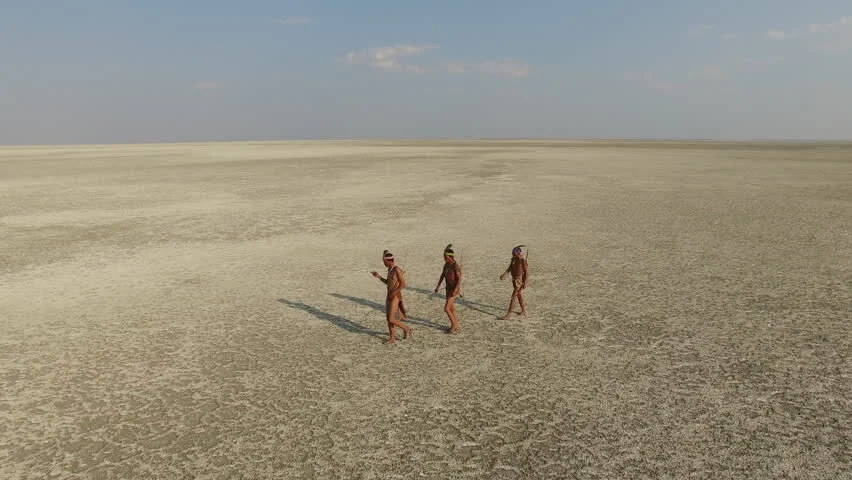Makgadikgadi Pans National Park
The empty quarter, but NOT really!
Makgadikgadi Pans are the largest salt pans in the world covering an area of over 30 000 km2. Its sheer massive size surpasses the Bolivian Salar de Uyuni salt pan which is the largest continuous pan in the world. However, the animal diversity and zebra-wildebeest migration found in Makgadikgadi Pans is unmatched by any habitat of similar nature. In terms of cultural heritage, the diversity of traditions that span over long period of time cannot be matched by any salt pan habitat.
The pans are the salty remains of ancient Lake Makgadikgadi. Scientists estimate that the inland sea once spanned anywhere from 80,000 to 275,000 square kilometers. The Okavango, Zambezi, and Cuando rivers likely emptied into this lake until tectonic shifts changed the elevation of the landscape and a changing climate dried up the rains.
For much of the year, the salt pans glimmer in white, parched by the sun and the salt and allowing little more than algae to grow. But during the rainy season (roughly November to March), the area is transformed into a crucial wetland. Water flows in from the Boteti and Nata rivers, filling ephemeral ponds, watering holes, and shallow lakes and creating short-lived but abundant grasslands. The event draws migrating wildebeest and zebras, as well as the predators that hunt them. The waters fill with ducks, geese, pelicans, and flamingos—one of just two breeding spots in southern Africa for the long-legged birds.
Humans have inhabited areas of the pans since the Stone age, and have adapted to geographical and climatic changes as they have occurred. Archaeological sites on the pans are rich with Early Man’s tools, and the bones of the fish and animals he ate.
Bushmen walking across Makgakgadi
Why Makgadikgadi?
If you find yourself at the horns of dilemma, wondering if you should come to Makgadikgadi or not then there are 4 words for you: YOU WILL MISS OUT! This area is simply a MUST SEE. Scientists have proposed that this area is the home to the Homo Sapiens Sapiens, where the modern human being originates. Therefore, just come, home is calling!
What & Why:
Picturesque undisturbed nature
Endless horizons
Indescribable landscapes
Biodiverse Fauna and Flora
Witness highly adaptive animal species
Discover yourself in the serenity
Activities:
Quad-biking
Hiking
Cycling
Hot-air Ballon
Bird photography (highly seasonal)
Landscape photography
Game drives
Meerkat experience
Walk with the Bushmen
Star gazing (Astronomy)
Search our website (top right) to find your trip to Makgadikgadi Pans. We are excited to take you there!
The Nxai Pan National Park
Part of the great Makgadikgadi complex, Nxai Pan National Park covers an area of 2 100 sq kms, and comprises several larger pans – Nxai Pan, Kgama-Kgama Pan and Kudiakam Pan, which were too once ancient lakes. These larger pans are now grassed, and are scattered with islands of acacia trees, and smaller pans that fill with water during the rainy season – thus providing rich resources for wildlife.
Common species to be sighted are zebra, wildebeest, springbok, impala, gemsbok, hartebeest, giraffe, lion, cheetah, wild dog, brown hyena, bat-eared fox, and elephant and buffalo.
Nata Bird Sanctuary
-The Flamingo Paradise!
Botswana’s first community-based conservation project is managed and staffed by residents of four local communities – Nata, Maphosa, Sepako and Manxotae. It is a good example of a non-consumptive means of wildlife utilisation that brings direct financial benefit to local communities. Proceeds from tourism activities in the sanctuary are shared by the four communities for whatever development projects they decide they want and need.
Nata Sanctuary opened its gates to the public in 1993, and in the same year was awarded the Tourism for Tomorrow award for the southern hemisphere.
In the peak season, birding, and even game viewing, can be superb. When the pans are flooded, thousands of flamingos, pelicans, ducks and geese congregate, and the scene is indeed awe-inspiring.
Why With Us?
We have specialised guides for this region.
Through years of travel here we have deep knowledge of the area.
We have great connection with the local communities.
Superior easy to understand itineraries
All trips are customer tailored
Great value for money!
We don’t sell tours but experiences.. thats what we focus on.
“Travelling– it leaves you speechless, then turns you into a storyteller.”
The African Wild Dog-an endangered species
Cape Buffalos migrating across the Makgadikgadi

















